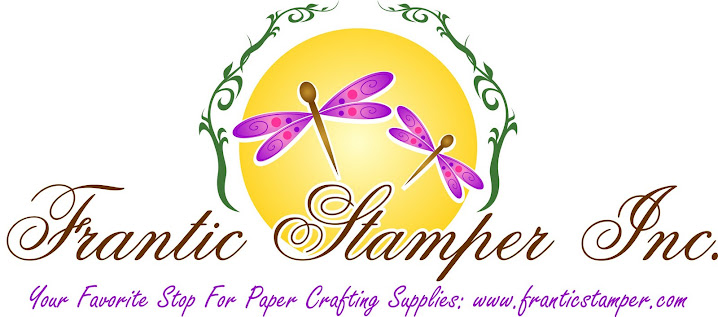 by Lis Whiting
by Lis Whiting
Beaded Spring Card

Materials
-

- White Cardstock (8 1/2" x 5 1/2")
- Graphic 45 Renaissance Faire Collection ( G45-P-0007 99 cents )
- Cream 1/4 inch satin ribbon (12 inches)
- Ivory Pearls, 3mm and 4mm ( KAI-PRL-714 $1.99 )
- Copper Pearls, 3mm ( KAI-PRL-790 $1.99 )
-
Flower Punches from McGill
- Buttercup ( McG-64004 $15.49 )
- Star Flower McG-64005 $15.49 )
- Martha Stewart Microbeads 12 color "metallic" pack - Blue, Green, Black, Gold, Tourmaline ( MSC-MB-12met $16.99 )
- Be Creative Tape sheets ( 5 sheets 8"x11" $6.99 )
- Xacto Blade ( FIK-KN-3314 $8.99 )
- Fiskars Self Healing Cutting Mat,color may vary ( FIK-craftmat $14.99 )
- Tidy Tray, Set of Two ( TIDY-2tray $14.99 )
Instructions:
- Fold the white cardstock in half to make the base for your card. The final measurement should be 5 1/2 x 4 1/4. Set it aside.
- Cut one piece of the Graphic 45 Renaissance Faire cardstock to 5 1/2 x 4. I used a couple of different styles and you can see in the picture that these are double sided, giving you beautiful variety.
- Select your punches. (I chose two flower designs by McGill’s Flower Series. I decided that I wanted a landscape card with two large flowers. I punched them out by flipping the punch over so that I could see where I was punching on the paper.)
-
I decided to hand cut the stems and leaves with an xacto blade so that I could add some of my own design work to it.
(I did use the standard long xacto knife by fiskars as pictured but I am buying the fingertip knife. Ive tried it and it gives much better control for things like this. Look for it in one of my upcoming projects!)
I have included a couple of examples of how you can punch and cut to create your spring flower scene. -
Cut a piece of double sided tape sheet so that you can cover the entire front of your white cardstock card. I chose white as my base color to give the micro bead colors a brighter appearance.
* BE VERY CAREFUL WHEN PLACING THIS DOWN! When it touches the paper, that’s it. It’s down. (This is good because we don’t want the micro beads to come off!) - Peel off the covering to expose the other side of the sticky glue.
- Attach your punched and cut design paper onto the card front (again, be careful! Once it’s down, it’s down. You can always trim the edges if they aren’t exact.)
-
Decide which color micro beads will go where on your card. Using a plastic bead tray, hold your card in the tray and CAREFULLY pour the beads over the exposed sticky areas you want to cover.
TIP: I mixed Martha Stewart’s colors to get the color I did; I used green, gold and a small sprinkle of black. This gave me a little more dimension in the stems than just the flat green. - When you are done with one color, be sure to pat the areas with your finger to help set the micro beads.
- If you look closely at the above picture, you will see that I got green in the flower area and there are also beads along the bottom edge of my card. Here’s how I fixed that:
- Take your thumb and forefinger and slide the card edge between them. You will be able to take off any excess beads quickly and without a mess. If some beads got in the wrong spot, don’t worry. Just use your xacto blade to gently scrape them out of the area. Now your card is clean and ready for the next step!
- Always clean your tray of any leftover beads so that you don’t get the colors mixed. (This works very much like glitter.) You will find that the microbeads are a little staticy. I never get every last bead out of the tray. Once I have poured back most of the microbeads back into their container, I put the tray in the trash bag I always have handy and give it a couple of shakes and its clean. Easy!
- Color your flowers, one at a time, (Unless you want both flowers the same color), using the same process as we did for the stems and leaves.
- TIP: You can use this technique with glitter and flocking also. Just think of the punches that you have and the great fun you can have with them now that you know about this!
- TIP: Try using your FINGERS to apply a different color just to the tips of the flowers. Let a few of the color beads dribble into the rest of the space. When you apply your second color, you will get a little of a fade effect.
- Add some cream ribbon at the bottom of the card. I decided to use a second ribbon at an angle to add some interest.
- Add the 3mm and 4mm ivory pearls to the flowers as shown in the picture.
- Add the 3mm gold pearls to the ribbon as shown.














TIP: Think about applying microbeads (glitter or flocking) to the edge of your card. This is easy as all you need is a strip of double sided strong tape. Use the same technique as above and you will be amazed at the result.
TIP: Think about using multiple colors in a pattern such as an alternating stripe along the edge of your card.
The pictures don’t do this card justice. When you are done, the dimension of the microbeads makes the card look as if the beads were applied on top of the paper. It looks really pretty! I hope that you try this technique out; you won’t be disappointed.
Lis















.jpg)
.jpg)
.jpg)
.jpg)
.jpg)
.jpg)



















